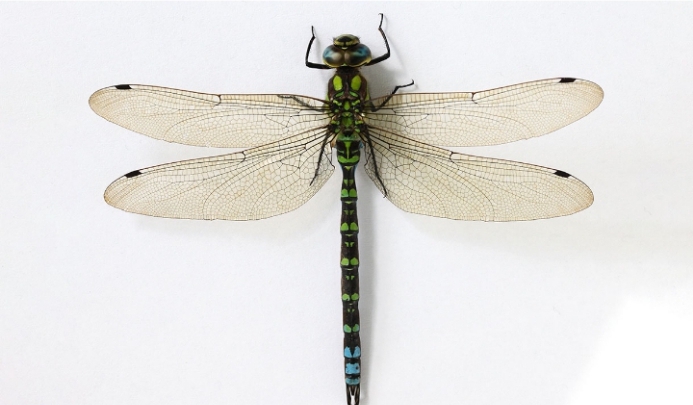Bacteria-shredding insect wings inspire new antibacterial packaging
Higher than 30% of food prepared for human absorption becomes useless , with whole shipments declined if bacterial development is noticed. The study sets the location for notably lowering waste, especially in meat and dairy exports, as well as expanding the shelf life and developing the high standards, security and integrity wrapped food on an industrial scale.
Professor Elena Ivanova of RMIT University in Melbourne, Australia, said that - the study group had effectively applied a natural occurance to a man-made substance plastic. Removing bacterial contamination is a very big stage in expanding the shelf life of food. We knew the wings of cicadas ( Cicadas, for several, indicated personal change, recreation, rebirth, and transformation. Different from a butterfly, moth, or other insects that undergo complete metamorphosis, cicadas have no pupal state ) and dragonflies were maximun-effective bacteria inhibitors and could used inspire a solution, but copied nature is regularly a challenge.
Professor Elena also said that - We have now produced a nanotexturing that mimics the bacteria-destroying cause of insect wings and keeps its antibacterial property when printed on plastic. This is a large stage towards a natural, chemical-free, antibacterial packaging solution for the food and production industry. In 2015, Australia transported $US3.1 billion of food and agricultural exports to Japan, producing it the 5th highest exporter of such products to the country.
How it works?
Dragonfly and Cicada wings are enclosed by a very big array of nanopillars definite spikes of identical size to bacteria cells. When bacteria arranged on a wing, the pattern of nanopillars puts the cells away, breaking their membranes and slay them. It's similar extending a latex glove. As it gently extended, the weakest point in the latex will become thinner and finally tear - said Lvanova. lvanova's group improved their nano-texture by copied insects' nanopillars and growing nano-patterns of their own.
To evaluate the pattern's antibacterial capacity, bacteria cells were observed at RMIT's world-class Microscopy and Microanalysis service. The good antibacterial patterns were combined with the Japan Group, who improved a route to regenerate the patterns on plastic polymer. Back in Australia, Lvanova's group examined the plastic nano-patterns and serched the one that is good reproduces insect wings but is also simplest to produced and multiply.
Lvanova said that - Relation with plastic was highly harder than other substances like silicon and metals, due to its flexibility. The nano-texturing produced in this reaserch keeps its own when used in rigid plastic. Our next move is changing it for application on softer plastics. Since, Lvanova and her teams searched the bacteria killing nature of insect wings a decade ago, they have been actionable to planned the suitable nano-pattern to harness insects bacteria-killing ability and acts it on a range of materials.
Until presently, it was hard to search proper method to regenerate this nano-texturing on a scale proper for production. But, latest technique occurs to scale up and apply antibacterial properties to packaging, among a range of other potential benefits, like personal protective equipment. Their latest study construct on a 2020 study into using insect-inspired nano-materials to fight superbugs.The group is interesting to participate with potential partners in the next step of the study improving the technology and determining the good ways to mass production the antibacterial packaging.
In biomimetic antibacterial surfaces, Professor Elena Ivanova manage the Mechano-bactericidal Materials study team in the School of Science at RMIT. The study was promoted by the Foundation for Australia-Japan Studies under the Rio Tinto Australia-Japan Collaboration Project. The study, published in ACS Applied Nano Materials, is a working between RMIT, Tokyo Metropolitan University and Mitsubishi Chemical's The KAITEKI Institute.


